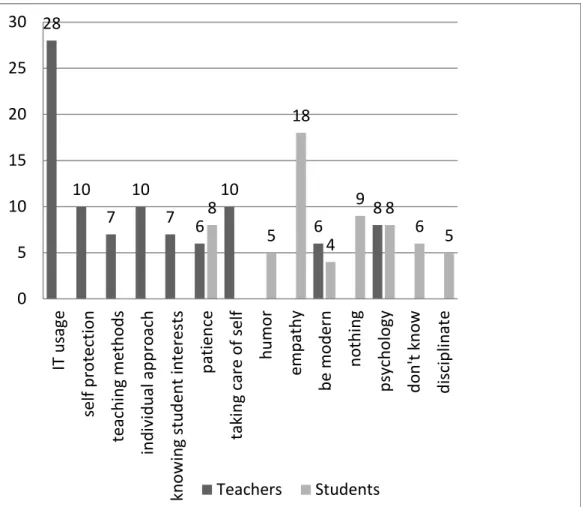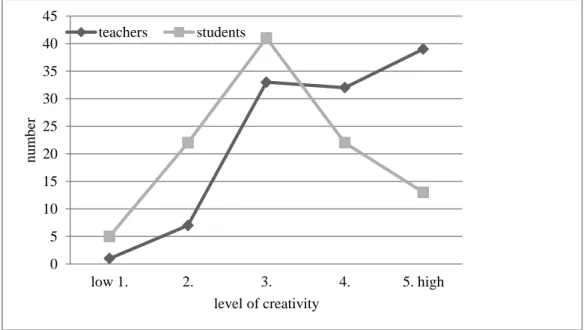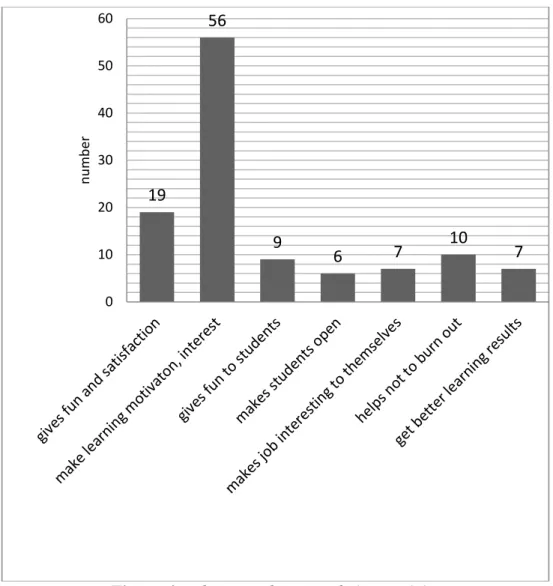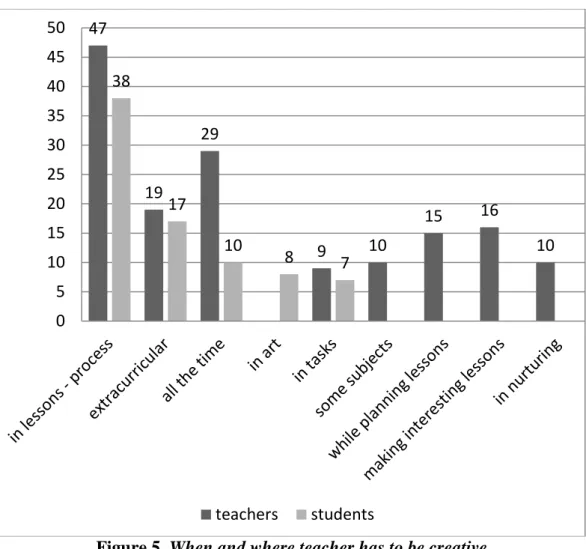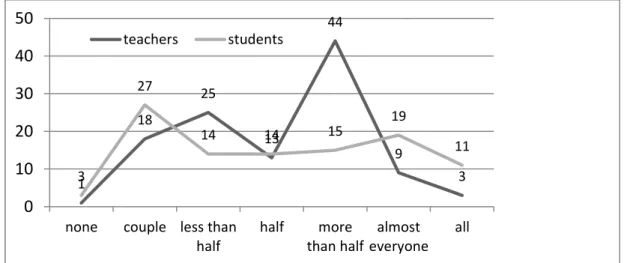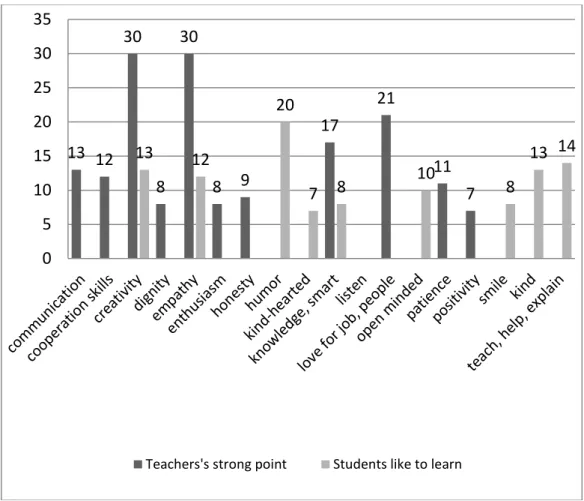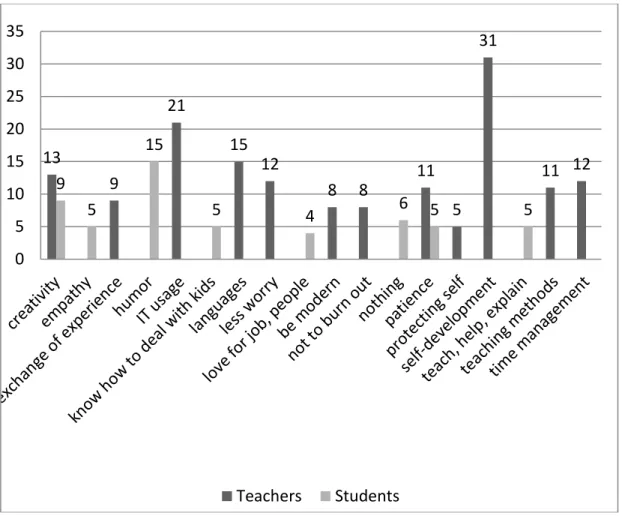This article describes the results of the focus group discussion on formative assessment in secondary schools. Learning in projects is done according to the goals and tasks and planned activities of the project.
Peer-assessment possibilities in international school cooperation projects
There are several types of research related to peer assessment in organizations, one of the arguments being that today's team-based organization uses intragroup peer assessment for performance appraisal and reward decisions (May, Gueldenzoph, 2006). According to the authors, international school cooperation projects are a good example of the ongoing globalization of knowledge and culture and internationalization.
Involvement in the preparation stage of the project
The interviews started with the question "How were you involved in the preparation phase of the project?", and the respondents' answers were divided as follows: seven out of ten respondents stated that they collaborated with partners, offered their ideas and participated in the discussion; eight respondents indicated that they participated in the work of the school project team and proposed their ideas (see Figure 1). Participation in the process of mutual evaluation of the project during its course The next question was about participation in the process of mutual evaluation after completion.
Participation in the peer-assessment process of the project during its run Next question was about participation in the peer-assessment process after the end of the
Participation in peer-assessment process after the end of the project Seven from ten respondents said that they actively discussed the process of the
In your opinion, what will the peer assessment of the project provide for the project preparation phase, project development and the end of the project?”. In all projects it is necessary to evaluate the benefits and outcome of the project at the beginning, middle and end.
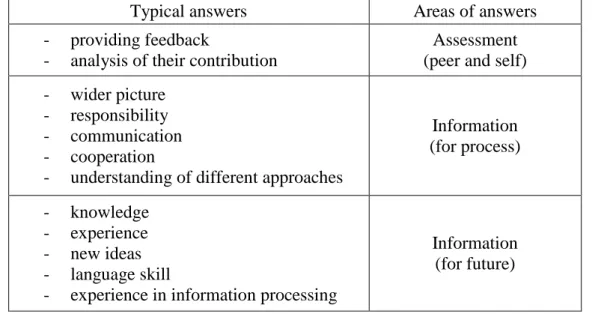
An investigation of teachers enterprise perspective in preschool institution activity planning
Taking into account this point of view, the preschool administration can cooperate with these teachers on specific topics by asking them to lead and coordinate projects, major events, thus not only enriching the institution's traditions, but also facilitating the teacher's enterprise acceptance and its further development. Professional and pedagogical activities are linked to the research and development activities of pre-school education and with work in the pre-school sector as a teacher and as deputy head of the pre-school institution.
The Initiative of Preschool Children in the Process of Self-Directed Learning
At the end of the month, the main prize is awarded to the child with the most points for the entire month. It is supported by the educator's observations during the activities and by the parents' responses to the questionnaires.
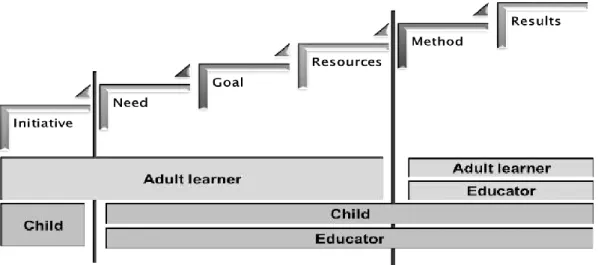
Contemporary Teacher's Professionalism: Reality and Challenges
Therefore, in this research, the professionalism of teachers is considered as a quality that arises from the professional competences of teachers. In this way, it is also possible to identify the main shortcomings and problems in the teachers' professionalism, and to identify the gap between the current and the desired situation, also what the teachers think should be improved and what the students think is the most important for today's teacher. Students believe that the most important competencies of teachers, which they must develop, are empathy, patience and psychology.
Further students and teachers were asked to estimate - how many teachers can be called "creative" in your school (for students - school they attend, for teachers - school where they teach). Also, while teachers' opinion on professional qualities and students' views were researched, their opinions on professional qualities needed to be a good teacher (see fig. 8) were compared.
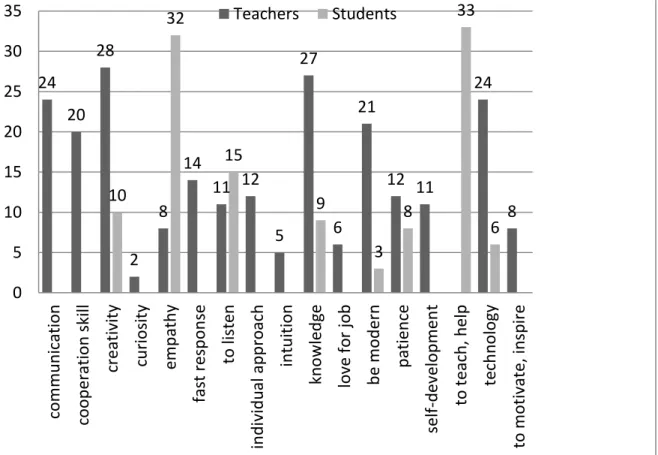
Factors affecting student’s motivation and dropout
An additional criterion was to limit the search to literature in the English language only. Sakichi Toyoda, one of the fathers of the Japanese industrial revolution, developed the technique in the 1930s (Toolshero, 2015). The cause of "lack of motivation" was not defined in the questionnaire as the underlying cause.
Regarding one's individual will, the analysis of which was not the purpose of this article. However, one of the most cited causes is a lack of motivation to learn.
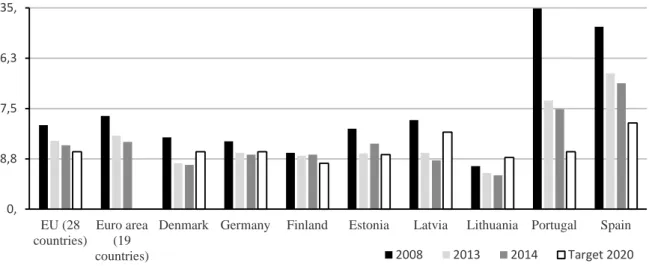
Not only scientists but also practitioners are increasingly emphasizing the importance of implementing quality management in the sports industry (Breuer, Erdtel 2005). Howat concluded the importance of client satisfaction/satisfaction in the sports quality management literature. The satisfaction or dissatisfaction with the sports services is a very important factor of sports quality management.
The necessity of quality management in the sports industry is closely related to the transformation of the sports industry. Breuer (2006) are convinced that quality management models should be used in the sports industry, but they should be adapted to the specifics of the sports industry.
Options of Perspective
The internal sports union group consists of members and employees, while the external group consists of spectators, fans, sponsors, government and society. The importance of these groups depends on the size of the sports association and its goals. For example, a small sports association focuses more on its members and the expectations of sponsors, while larger sports organizations such as professional football or ice hockey clubs focus more on fans, the public and the media (Dregner, Sachse and Thiel 2006).
When the target audiences are defined, the next step is to establish a definition of satisfaction and member expectations and requirements for sports union. To achieve this task, a sports union must establish a communication with their members in the form of negotiations between the staff and members or evaluation of members' positive and negative reviews.
Uncertainty
It is important to determine the target audience of the sports club/association, whose consumer behavior can be manifested in several forms. It would be important for sports unions to define their target audience in such a way that they exceed or even exceed the demands and expectations of their members. Beutin (2006) stated that customer satisfaction can be measured using an event-oriented or function-oriented approach or method.
Attribute-oriented method examines the characteristics or service components on the basis of which the customers form their satisfaction. The characteristic-oriented research method can also be measured by the content, specific periods or multidimensional ex-post method which is more suitable for relatively low survey expenses and relatively high benefits (Beutin, 2006).
Integration of external factors
For example, fans of a football club get match tickets or buy the other Merchandising products while sponsors make a deal but members of sports associations show and reinforce the loyalty to its sports associations / union. Event-oriented method only examines selected contacts between customers and service providers, so this method is less suitable for measuring overall customer satisfaction. In this method, respondents rated each service element or feature to gauge satisfaction.
Dysfunctions
Secondly, materials were searched for introducing quality management in the sports sector. Based on the literature research and analysis, we have created the experimental, theoretical model for quality management evaluation of sports NGOs. Criteria for assessing quality management in non-governmental sports organizations were determined on the basis of literature research and review.
These scholars considered importance, completeness, timeliness, transparency and cost for the assessment of quality management in non-governmental sports organizations. The next research task is to establish the criteria model for quality management in non-governmental sports organizations, which will be based on the selected material from the literature research and review.
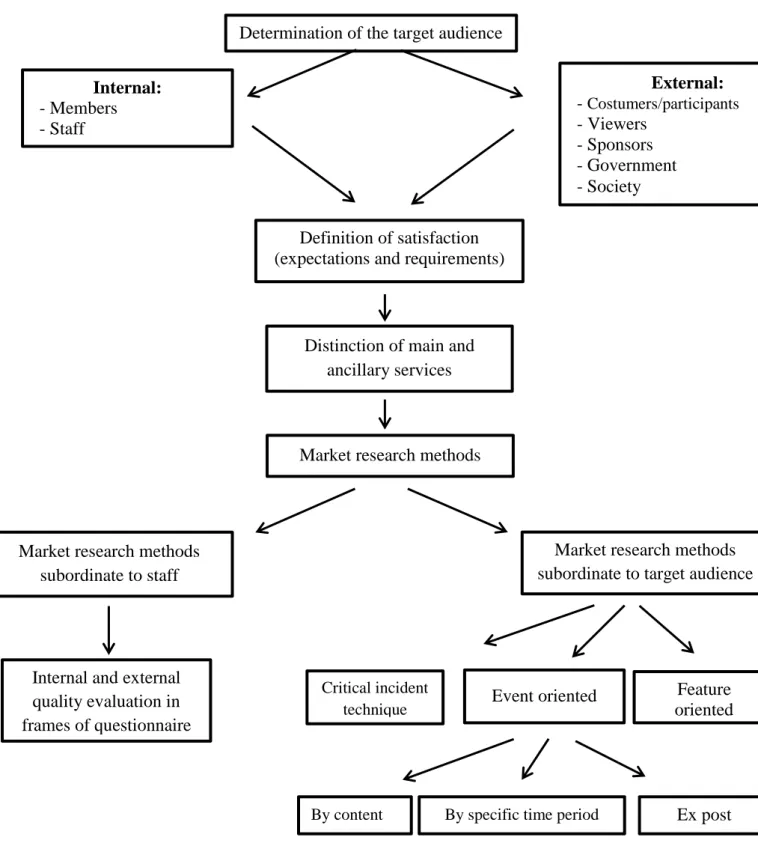
The need for autonomy, competence, and relations with others and the realization of those needs in the opinion of prospective
The need for autonomy, competence and relationships with others and the realization of these needs according to potential. The position expressed above can also be found in the definitions of the students participating in the research: The right to decide on their education; An independent decision-making regarding the content and method of learning; The ability to use one's own strategies to achieve goals - the freedom to act and achieve goals; Autonomy is deciding for oneself about what and how I want to learn and how my learning will be assessed by the teacher; Not to be set the pace and working method. One cannot fail to mention explanations that link autonomy with the fact of enjoying various rights: the right to one's opinion; (...) the guarantee of the right to express one's opinions and judgments.
Such an approach is expressed in the following: The need to be competent is the chance to be a good teacher and later work as well as possible with children; (...) it should be treated as preparation for future work - the feeling of being ready to work as a teacher. Various degrees in which this need is met; A small degree of individuation in learning skills during classes; It depends on the person offering the course - the requirements he/she sets and the way in which he/she offers the course; Use of the library; The teacher aims for each student to acquire competencies.
The topicality of recommended civic educational programme and the framework of its content in the Republic of Latvia
It should be noted that civic education is defined as one of the prerequisites for the development of the Republic of Latvia. Similar to the case with the concept of civic education, there are different explanations and approaches to the concept of implementing civic education in the educational process. One of the most recognized people in the process of the formation of the consciousness of the nation of Latvia - A.
The framework of the content of the citizenship education concept in Latvia in the 20th century: 20th-. Citizenship education serves as a narrative framework, but citizenship education becomes the form and process of civic education implementation.
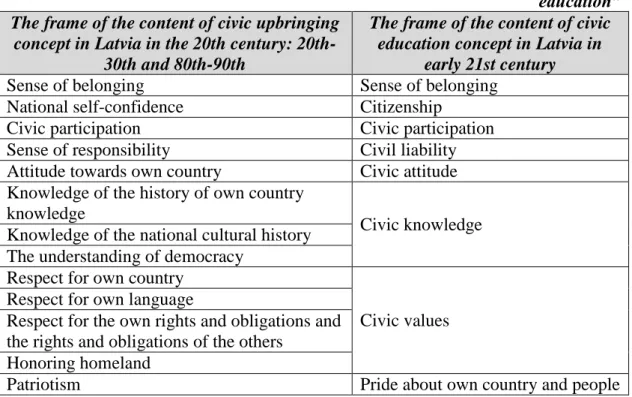
Learning Theories and Didactic Models in Expert’s Continuing Education
Therefore, the best suggestion for the experts is blended learning and appropriate support from e-materials. The medical expert's didactic process is based on four theories: the adult learning theory, didactic process theory and curriculum theory. The curriculum for the medical experts has therefore not only been based on the theories of adult learning, but also on the views of the experienced experts.
Characteristic features of adult learner learning have led to the choice of key learning theories to base on when compiling the program for the medical experts. This article is an attempt to define the specific use of the learning theories in the learning of adult medical experts: cognitive, social and critical constructivism is chosen as the most appropriate background that does not exclude other theories to make the implementation of the program more diverse.
Didactic models
The philosophy of the critical constructivists engages students in activities that are critical of an author's prevailing or implied (e.g., by an article) opinion or a particular social grout, etc. After gaining insight, students must access an alternative perspective of meaning for interpretation this reality so that criticism of the assumptions is possible (Mezirow, 1981). The experts who joined the program highly appreciated its usefulness for their activities in the expert committees: 49% of the experienced specialists and 93% of the novices responded to the questionnaire that the content of the program and its results are very useful for the work of experts.
Proposed design of learning theories and didactic curriculum models for continuous learning of medical professionals. Q: Back to work - The role of competency validation in professional counseling for adults.
Learning argumentation skills through debating
The necessity of argumentation skills for successful preparation for the central examination of English language. Argumentation skills are required for both the speaking and writing portions of the Central English Language Exam. However, the particular importance of these skills is indispensable in the writing part of the exam (task 2: essay) and the speaking part of the exam (task 3: the monologue).
Which learning method(s) helped you develop the argumentation skills needed for the written and speaking parts of the exam. Did you have the necessary argumentative skills for the second task in the writing part of the exam - essays.
